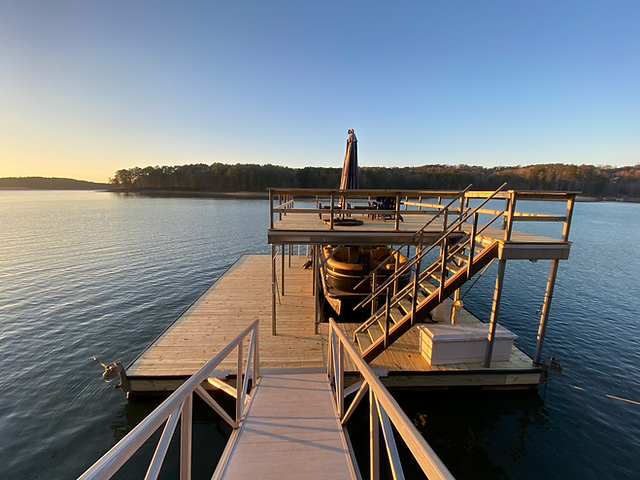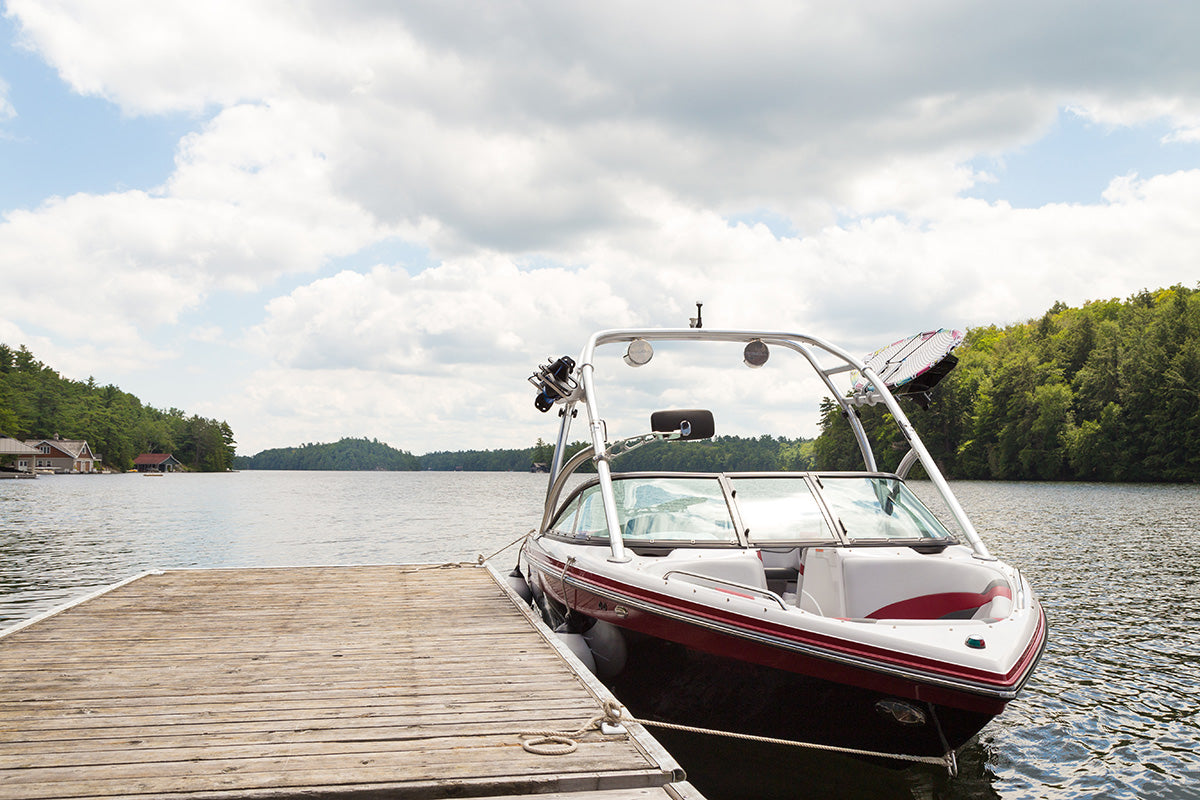Leading Indications You Need Specialist Dock Repairs This Period
Leading Indications You Need Specialist Dock Repairs This Period
Blog Article
Effective Dock Repair Work Techniques: Ensuring Structural Stability
Making certain the structural honesty of anchors with efficient fixing techniques is critical for the long life and safety and security of marine facilities. Ultimately, choosing the right repair service materials, such as corrosion-resistant alloys and composite products, is important for toughness.
Examining Dock Damages
Analyzing dock damage is a vital initial step in making certain the architectural stability and safety of any type of docking center. This first assessment involves a detailed examination to identify both concealed and visible problems. Trick elements to take a look at include the dock's structure, pilings, outdoor decking, and hardware. Each part has to be looked at for indicators of wear, rot, rust, or other forms of deterioration that can compromise the architectural integrity.
Architectural engineers or qualified examiners typically do these analyses making use of specialized devices and techniques. Underwater evaluations could employ sonar devices or remotely ran vehicles (ROVs) to spot immersed damage. Above water, visual examinations are enhanced by utilizing dampness meters and various other diagnostic tools to discover underlying concerns not instantly noticeable to the naked eye.

Choosing Repair Service Materials
Choosing the ideal repair work products is a critical action in the dock restoration procedure, one that straight affects the durability and efficiency of the repaired structure. Product choice should be driven by elements such as environmental conditions, load-bearing requirements, and compatibility with existing dock elements. Wood is a traditional selection for docks due to its all-natural strength and aesthetic appeal. Choosing the ideal type of timber, such as pressure-treated lumber or naturally rot-resistant species like cedar or teak, is crucial to withstand aquatic settings.
In addition to wood, composite materials are progressively preferred due to their resilience and low upkeep requirements. Compounds, commonly made from a blend of plastic and timber fibers, use superb resistance to rot, pests, and UV damage. For metal anchors, selecting corrosion-resistant alloys such as galvanized steel or marine-grade aluminum is essential to prevent rust and ensure structural stability in saline water conditions.
Epoxy resins and marine-grade sealants are indispensable for fixing fractures and sealing joints, supplying a water resistant obstacle and enhancing the dock's overall stamina. By diligently picking premium products, dock fixings can achieve resilient results, thereby guarding versus future deterioration and making sure secure, reliable usage.
Structural Support Techniques
Efficient structural reinforcement techniques are vital in guaranteeing the stability and long life of dock fixings. This method is particularly effective for docks subjected to hefty lots or harsh ecological problems.
Another essential method is the application of fiber-reinforced polymers (FRP) These materials supply high strength-to-weight ratios and superb resistance to deterioration, making them ideal for strengthening wooden or concrete docks. FRP can be applied in sheets or strips and bonded with epoxy materials to improve structural integrity.
Bracing and anchoring systems likewise play an important function in structural support. Cross-bracing, using steel or wooden beams, can counteract lateral pressures, decreasing persuading and activity. Securing systems, such as helical piers or driven stacks, give a stable foundation by moving loads to deeper, extra steady dirt layers.
Lastly, the combination of load-distribution plates can help distribute weight a lot more uniformly throughout the dock's surface, reducing localized stress and Continued anxiety points. These methods collectively ensure that docks remain risk-free and robust, qualified of withstanding the roughness of their functional atmosphere.
Advanced Repair Work Approaches

One more innovative technique entails underwater welding, which enables repairs to be conducted without the need to dewater the location. This technique is specifically helpful for attending to architectural concerns in immersed dock elements, ensuring very little interruption to operations. Boosted welding strategies, combined with robot systems, supply precision and dependability, consequently extending the life expectancy of the dock.
Additionally, cathodic security systems are executed to avoid corrosion in metal dock frameworks. By utilizing sacrificial anodes or pleased present systems, these methods effectively minimize the electrochemical procedures that bring about material damage.
Lastly, advanced monitoring technologies, such as structural health surveillance (SHM) systems, give real-time data on the condition of dock frameworks. These systems make it possible for proactive upkeep and timely treatments, eventually guaranteeing the lasting architectural honesty of the dock.
Maintenance and Avoidance
Maintenance and prevention are fundamental concepts that underpin the longevity and safety of dock structures. Normal assessments are vital, allowing for early discovery of wear and tear, prospective weaknesses, and environmental impacts. A positive approach, including routine checks for rust, rot, and structural shifts, alleviates pricey repair services and extends the dock's functional life.
Safety nets must consist of applying protective finishings to metal parts to safeguard versus corrosion and using treated wood to stand up to degeneration. Furthermore, guaranteeing appropriate water my site drainage and air flow can protect against water buildup, which is a common root cause of structural degradation. Incorporating top quality materials and adhering to maker standards throughout building and repair phases additionally play important duties in boosting resilience.

Training workers in dock upkeep ideal practices ensures constant application of preventive steps. Leveraging technical breakthroughs, such as drones for examinations and sensing units for real-time tracking, can even more boost maintenance efforts. By prioritizing maintenance and avoidance, dock owners can guarantee structural honesty, functional safety, and cost-effective administration over the try this website dock's lifespan.
Final Thought
To conclude, maintaining the structural stability of aquatic centers requires extensive dock repair strategies. Extensive inspections using innovative tools reveal both visible and concealed problems, while the selection of appropriate repair service materials boosts resilience. Applying structural support methods addresses stress points properly. Advanced repair methods, paired with regular maintenance methods, make certain the dock remains operational and secure under diverse environmental conditions. Embracing these methods significantly lengthens the lifespan and performance of aquatic facilities.
Making certain the architectural integrity of docks with effective repair service methods is critical for the longevity and safety and security of marine centers.Choosing the proper fixing products is a pivotal step in the dock reconstruction procedure, one that straight affects the longevity and performance of the fixed structure.Effective architectural support strategies are vital in making certain the stability and longevity of dock fixings. By focusing on upkeep and avoidance, dock proprietors can guarantee structural integrity, operational safety, and cost-efficient administration over the dock's life-span.
In verdict, keeping the architectural integrity of aquatic centers requires comprehensive dock repair strategies.
Report this page